Complete Guide to All 72 Naruto Books – Discover the Full Series Now!
Explore the entire Naruto series with our comprehensive guide to all 72 books. Uncover the story arcs, characters, and publication details that make this manga a must-read for fans.
NARUTO
Anime Fever
2/7/20258 min read
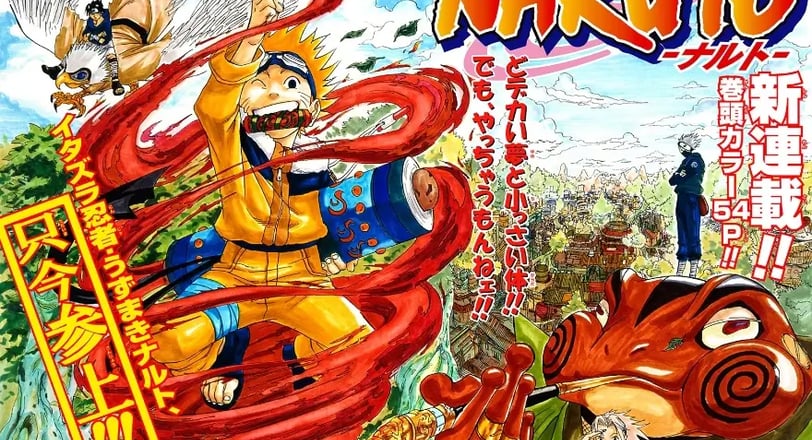

Naruto, created by Masashi Kishimoto, is a manga series that took the world by storm. Kishimoto, born on November 8, 1974, in Okayama Prefecture, Japan, dreamed of becoming a mangaka from a young age. In 1997, he wrote a one-shot version of Naruto, published in Akamaru Jump Summer. Two years later, in 1999, the series officially began serialization in Weekly Shōnen Jump, launching Kishimoto’s career at just 25 years old.
What made Naruto stand out was its universal themes of friendship, perseverance, and overcoming adversity. These elements allowed the story to resonate with fans across cultures, making it one of the most beloved manga series of all time. With memorable characters, intense battles, and a rich, evolving storyline, Naruto quickly became a global sensation, inspiring everything from fashion trends to music, and even influencing a new generation of anime fans.
Even more than two decades after its debut, Naruto remains a powerhouse in pop culture, continuing to entertain and inspire new fans worldwide. Its undeniable impact on anime and manga history cements its status as a timeless classic that will be remembered for generations.
Breakdown of the 72 Naruto Volumes
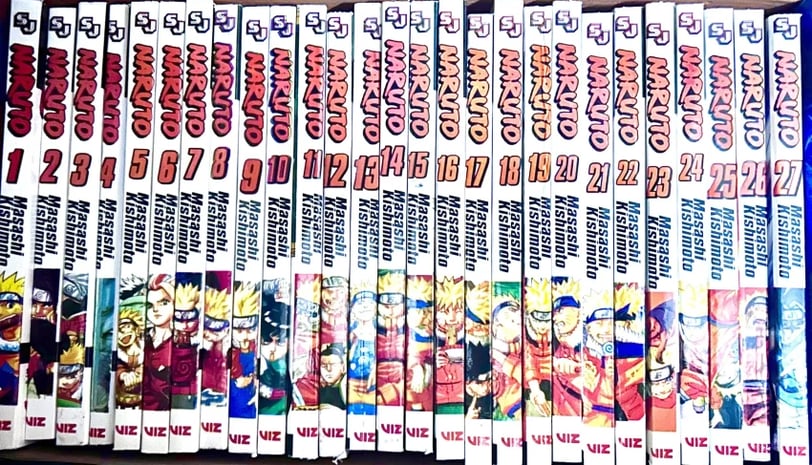

The Naruto manga series, created by Masashi Kishimoto, is composed of 72 volumes, divided into two main parts: Part I and Part II.
Part I encompasses the first 27 volumes (chapters 1–244) and introduces readers to the world of ninjas, focusing on Naruto Uzumaki's early adventures. Key story arcs in this section include:
Introduction Arc: Naruto's beginnings in the Hidden Leaf Village, his struggles with acceptance, and his dream to become Hokage.
Land of Waves Arc: Team 7's first major mission, introducing characters like Zabuza Momochi and Haku, highlighting the harsh realities of the ninja world.
Chunin Exams Arc: A tournament-style examination where young ninjas, including Sasuke Uchiha and Sakura Haruno, showcase their skills, leading to the invasion of the Hidden Leaf Village.
Search for Tsunade Arc: Naruto's quest to find the legendary Sannin, Tsunade, to become the Fifth Hokage, during which he learns the powerful Rasengan technique.
Sasuke Retrieval Arc: Following Sasuke's defection to seek power from Orochimaru, Naruto and his friends embark on a mission to bring him back, facing formidable foes along the way.
Notable character introductions in Part I include Kakashi Hatake, Gaara, Rock Lee, and the enigmatic Itachi Uchiha, each contributing significantly to the series' depth and complexity.
Part II, known as Naruto: Shippuden in its anime adaptation, spans the remaining 45 volumes (chapters 245–700) and takes place two and a half years after Part I. The narrative matures, delving into more complex themes and character developments. Key story arcs include:
Kazekage Rescue Arc: Naruto's return to the village and the mission to save Gaara, now the Kazekage, from the criminal organization Akatsuki.
Sasuke and Sai Arc: Introduction of Sai as Sasuke's replacement in Team 7 and the team's efforts to locate Sasuke.
Hidan and Kakuzu Arc: The confrontation with Akatsuki members Hidan and Kakuzu, highlighting Shikamaru Nara's strategic genius.
Pain's Assault Arc: A devastating attack on the Hidden Leaf Village by Pain, leading to a pivotal battle with Naruto and revelations about his lineage.
Five Kage Summit Arc: Political tensions rise as the leaders of the five great ninja villages convene, and Sasuke's actions further complicate international relations.
Fourth Great Ninja War Arc: An all-out war against the Akatsuki and their army of reanimated ninjas, culminating in the revelation of the true antagonist, Kaguya Otsutsuki.
Throughout Part II, characters undergo significant growth. Naruto attains greater control over the Nine-Tails within him, Sasuke grapples with his desire for vengeance, and Sakura becomes a formidable medical ninja. New characters like Yamato, Killer Bee, and members of the Akatsuki are introduced, each adding depth to the expansive world Kishimoto crafted.
The series concludes with Naruto achieving his dream of becoming a hero and uniting the ninja world, setting the stage for the next generation in the sequel series, Boruto: Naruto Next Generations.
Publication History and Global Reach
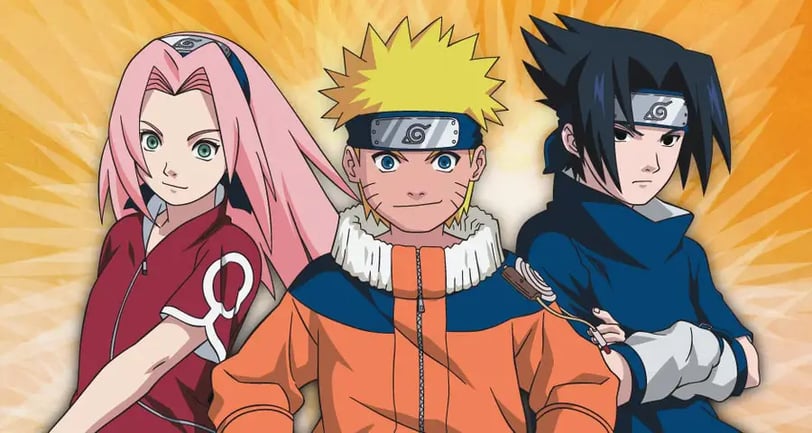

Naruto debuted in Weekly Shōnen Jump magazine's 43rd issue in 1999, marking the start of its serialization. The series concluded in the magazine's 50th issue in 2014, culminating in a 15-year run.
In Japan, Shueisha compiled the chapters into 72 tankōbon volumes, with the first volume released on March 3, 2000. The English adaptation was handled by VIZ Media, which began publishing the series in North America. While the core storyline remained consistent, certain cultural references and content were adjusted to better suit Western audiences. For instance, some scenes were edited or censored to align with different broadcasting standards.
The success of the manga led to its adaptation into an anime series produced by Studio Pierrot and Aniplex. The anime premiered in Japan on October 3, 2002, and concluded on March 23, 2017, encompassing both the original series and its sequel, Naruto: Shippuden. Beyond the anime, the franchise expanded into eleven theatrical films, multiple original video animations (OVAs), and a plethora of novels, video games, and merchandise. This extensive media presence solidified Naruto's status as a global cultural phenomenon.
Collecting the Naruto Books
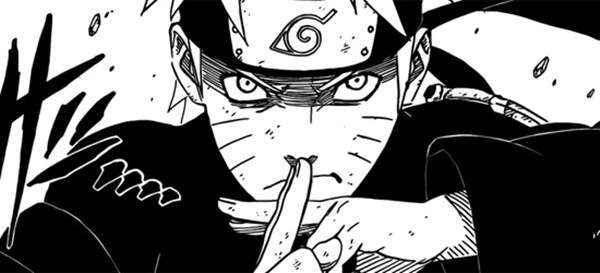

For enthusiasts looking to collect the Naruto manga series, a variety of formats and editions are available to suit different preferences:
Available Formats:
Tankōbon Volumes: The original format consists of 72 individual paperback volumes, each containing a segment of the story. This format is ideal for traditional collectors who appreciate detailed cover art and individual volume ownership.
3-in-1 Omnibus Editions: These editions compile three consecutive volumes into a single book, resulting in 24 omnibus volumes. While more cost-effective and space-saving, it's worth noting that the paper quality may be slightly reduced compared to the single volumes.
Digital Versions: For those who prefer reading on electronic devices, digital versions of the Naruto manga are available. These can be purchased through various online platforms, offering the convenience of portability and instant access.
Special Editions and Box Sets:
Box Sets: Comprehensive box sets are available for collectors seeking a complete collection.
Box Set 1: Includes Volumes 1–27, covering the entirety of Part I.
Box Set 2: Contains Volumes 28–48, encompassing the first portion of Part II.
Box Set 3: Comprises Volumes 49–72, concluding the series.
These box sets often come with exclusive posters, booklets, or other collectibles, enhancing their appeal to dedicated fans.
Where to Purchase:
Online Retailers: Websites like Amazon offer a wide selection of Naruto manga editions, including box sets and digital versions.
Specialty Shops: Stores specializing in anime and manga merchandise, such as the Crunchyroll Store, provide various editions and related collectibles.
Local Bookstores: Major bookstore chains and independent bookshops often carry manga sections where Naruto volumes can be found. It's advisable to check with local retailers for availability.
When building a Naruto collection, consider factors such as available space, budget, and desired edition features to choose the format that best suits your preferences.
Beyond the Main Series: Spin-offs and Novels
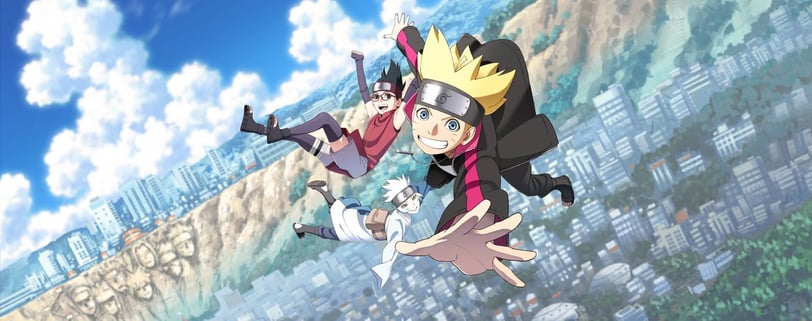

Beyond the main Naruto series, the franchise has expanded through various spin-offs and light novels that delve deeper into its rich universe.
Boruto: Naruto Next Generations
Serving as a direct sequel, Boruto: Naruto Next Generations follows Boruto Uzumaki, Naruto's son, as he navigates life as a young ninja. This series explores the challenges faced by a new generation, introducing fresh characters while providing updates on beloved figures from the original saga. The manga began serialization in 2016, with an anime adaptation premiering in 2017.
Light Novels and Additional Stories
The Naruto universe is further enriched by numerous light novels that offer deeper insights into various characters and events:
Naruto Hiden Series: This collection delves into the personal lives and untold stories of key characters post-manga conclusion. Notable titles include:
Kakashi Hiden: Lightning in the Frozen Sky – Explores Kakashi Hatake's journey and internal struggles after the Fourth Great Ninja War.
Shikamaru Hiden: A Cloud Drifting in the Silent Dark – Focuses on Shikamaru Nara's missions and personal growth in the new era.
Sakura Hiden: Thoughts of Love, Riding Upon a Spring Breeze – Chronicles Sakura Haruno's endeavors and feelings in the aftermath of the war.
Naruto Shinden Series: Set during the timeline of Boruto, these novels shed light on the evolving dynamics of the original characters as they adapt to their roles as mentors and leaders.
Naruto Retsuden Series: This series delves into the adult lives of central characters, exploring their personal challenges and growth.
Impact on Narrative and Character Development
These spin-offs and novels significantly enhance the Naruto narrative by:
Deepening Character Backstories: They provide nuanced perspectives on characters' motivations, fears, and aspirations, enriching the original storyline.
Expanding the Universe: By introducing new locales, cultures, and characters, these works broaden the scope of the Naruto world.
Bridging Story Gaps: They fill in narrative gaps, offering context to events and character decisions that may not have been fully explored in the main series.
Collectively, these additions offer fans a more comprehensive understanding of the Naruto universe, ensuring its enduring appeal and relevance.
Why Read the Entire Naruto Series?
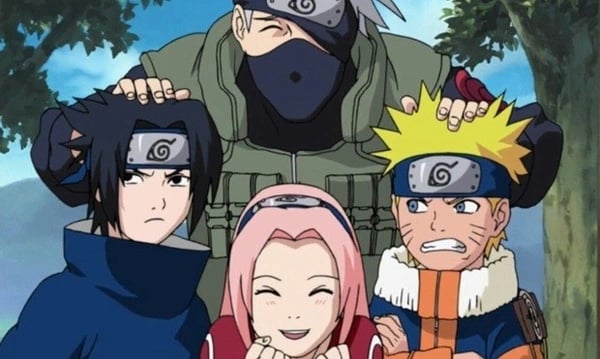

Immersing yourself in the entire Naruto series offers a profound journey through deep character development, intricate storytelling, and themes that resonate universally.
Deep Character Development and Intricate Storytelling
At its core, Naruto chronicles the evolution of Naruto Uzumaki, an ostracized orphan with dreams of becoming the Hokage—the leader of his village. His transformation from a mischievous outcast to a revered hero is portrayed with remarkable depth, highlighting his resilience and growth. Parallel narratives, such as Sasuke Uchiha's quest for vengeance and Sakura Haruno's journey toward self-discovery, enrich the tapestry of the story, offering diverse perspectives and emotional complexity.
Themes of Friendship, Perseverance, and Personal Growth
The series delves into profound themes:
Friendship: The bonds between characters underscore the importance of camaraderie and loyalty.
Perseverance: Naruto's unwavering determination in the face of adversity exemplifies the power of persistence.
Personal Growth: Many characters undergo significant transformations, confronting their inner demons and evolving over time.
These themes are woven seamlessly into the narrative, offering lessons that resonate with readers and viewers alike.
Cultural Significance and Influence on Modern Manga and Anime
Naruto has left an indelible mark on global pop culture. Its characters have become cultural icons, inspiring cosplays, fan art, and discussions worldwide. The series has influenced numerous subsequent manga and anime, setting benchmarks in storytelling and character development. Its exploration of universal themes and the depth of its characters have contributed to its enduring legacy and widespread acclaim.
Engaging with the entire Naruto series provides not just entertainment but also insights into human nature, relationships, and the journey of growth, making it a compelling experience for audiences of all ages.
Conclusion
The Naruto series stands as a monumental work in the world of manga and anime, captivating audiences with its compelling characters and profound themes. Spanning 72 volumes, it offers an immersive journey through the life of Naruto Uzumaki and his comrades, exploring themes of friendship, perseverance, and personal growth. Its cultural impact is undeniable, influencing countless subsequent works and leaving a lasting legacy in global pop culture.
For new readers, embarking on this journey promises not only an engaging narrative but also valuable life lessons woven into its intricate storytelling. The series' enduring popularity and relevance are a testament to its universal appeal and the depth of its storytelling. Diving into all 72 volumes will provide a comprehensive understanding of why Naruto continues to resonate with fans around the world.
Read Also: How Many Naruto Episodes Are There? A Complete Guide for New and Veteran Fans
Read Also: How Many Naruto Movies Are There? Complete List and Watch Order
